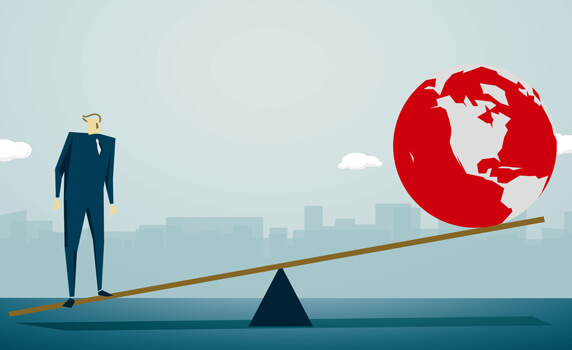Stories
Competencies and Functions of Global Leaders
Jordi Canals proposes the definition of a leadership model
September 19, 2014

Corporate strategy has evolved faster than leadership development in many global companies; a mismatch that creates management problems.
In his paper Global Leadership Development, Strategic Alignment and CEOs’ Commitment, IESE’s Jordi Canals offers a conceptual framework – based upon global leadership development programs in many international companies – to help organizations create successful leadership initiatives.
This model starts with the definition of the 5 most important functions of the CEO, followed by the 4 basic competencies a global leader should have.
Five Functions of Global Leaders
Understanding that global leaders, unlike domestic leaders, must address people worldwide, Canals ascertains that many of the tasks of CEOs are valid across cultures, divisible into five main functions:
1. Mission and meaning. CEOs must communicate what the company stands for and what its purpose is. This universal function of leadership is especially relevant to global organizations that need to unify various business units spread around the world.
2. Strategy. Global leaders need to develop a point of view about the future of the firm, one that can be clear, rational and that balances high expectations with the firm’s capabilities. Strategic thinking means making choices — and global leaders face more choices than domestic leaders. At stake is a long-term vision of how to compete and create economic and social value.
3. Execution. Leaders are action-oriented and are tasked with making things happen, according to the corporate strategy and underlying mission. Execution also involves organizational design: who does what and where, formal and informal incentive systems, and management control systems.
4. Integration. In global organizations, the integration of people from different backgrounds across businesses, functions and geographies is indispensable. CEOs need to help global firms come together and work together as a team. Understanding cultural differences and working with people from different countries is more important in global firms than in domestic ones.
5. Leadership development. Future global leaders should be able to work across the world. Future global leaders should include those who are culturally savvy and with specialized knowledge in specific markets, away from headquarters.
Four critical global leadership competencies
Leadership development programs should not forget that the main goal of learning and development is to improve leaders’ professional development and performance, in all functions they are engaged with.
Canals uses a framework with the four major competencies that global leaders need to have:
1. Knowledge. This includes the information, notions, models and ideas that global leaders need to have or acquire. This includes models to understand the global world and become familiar with specific countries with different political, social and economic systems.
2. Capabilities. This includes problem analysis and synthesis, problem-solving, decision-making, action orientation, leadership, dealing with complexity/ambiguity and organizational design.
3. Interpersonal skills. Global leaders’ interpersonal skills help leaders manage, engage and motivate people, and include, among others, fairness, respect, communication, team work, personal empathy, openness, cultural sensitivity and appreciation for diversity.
4. Attitudes. These are the personal traits that shape leaders’ conduct and behavior and define the foundations of their relationships with others. Based upon classical virtues, Canals’ model looks to integrity, humility, self-awareness, self-control, strength and temperance in leaders’ attitudes.
“Global leadership development is one of the top requirements for global companies’ long-term success and should be high on the CEO’s agenda,” Canals advises. In fact, CEOs should not only be present in the programs, but they should also take an active role in designing and, eventually, assessing them as to ensure that all leadership development initiatives are aligned with the firm’s mission, culture and strategy.
For more information, see IESE Insight